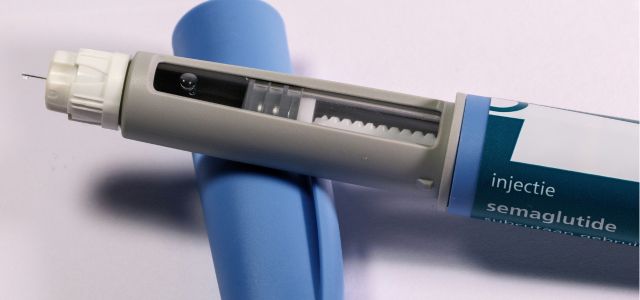In our July 2025 analysis, “The Semaglutide Story: Highlighting the Need to Maintain Patent Protection in Canada,” we examined the vulnerabilities exposed by the lapse of Novo Nordisk’s core compound patent (CA 2,601,784) for semaglutide—the active ingredient in blockbuster drugs Ozempic® and Wegovy®.
This administrative decision, coupled with the impending expiration of data exclusivity on January 4, 2026, positioned Canada as a potential pioneer for generic entry among major Western markets.
Three months later, developments confirm that trajectory, with generic manufacturers accelerating preparations for launch. This follow-up explores recent advancements, their implications for market access and pricing, and the enduring imperative for robust patent lifecycle management in Canada.
Accelerating momentum toward generic availability
Since our initial publication, Health Canada has continued to review multiple abbreviated new drug submissions (ANDS) for semaglutide, with at least five filings from prominent generics, including Sandoz Canada, Apotex, and Hikma Pharmaceuticals, under active consideration.
Recent announcements underscore the competitive fervor: Sandoz has committed to pricing its generic versions at up to 70% below branded equivalents upon approval, potentially slashing monthly costs from approximately CAD 1,000 to CAD 300 or less.
Similarly, Canadian innovator Vimy Pharma has entered the fray, announcing plans for a domestically manufactured generic semaglutide formulation targeted for early 2026 release, emphasizing supply chain resilience amid global shortages.
Internationally, US-based telehealth provider Hims & Hers Health has signalled its intent to expand into Canada in 2026, offering compounded and generic semaglutide options to capitalize on the post-exclusivity landscape.
Even global players like Dr Reddy’s Laboratories have outlined ambitions to launch generics in 87 countries, including Canada, as early as March 2026, aligning with semaglutide’s patent expiry in select emerging markets.
These moves align with projections that Canada could realize annual healthcare savings exceeding CAD 500 million once generics penetrate the market at scale, enhancing accessibility for the estimated 2.5 million Canadians managing type 2 diabetes or obesity.
Notably, the core patent lapse—stemming from unpaid maintenance fees in 2019—has drawn renewed scrutiny, with Novo Nordisk maintaining it was a deliberate strategic decision rather than an error.
Industry observers speculate this may reflect a calculated pivot toward secondary protections, such as patents on injection devices and dosing regimens extending to 2033, or a focus on next-generation GLP-1 therapies like CagriSema®.
Nonetheless, the absence of the compound patent from Canada’s Patent Register precludes linkage under the Patented Medicines (Notice of Compliance) Regulations, streamlining generic approvals without the typical 24-month litigation stay.
Implications for innovation, pricing, and policy
The semaglutide developments reinforce Canada’s role as a bellwether for global pharmaceutical dynamics. As the first OECD nation poised for widespread generic semaglutide availability, Canada is likely to become a “guinea pig” for pricing experimentation, with implications rippling southward via US importation programs under Section 804 of the Federal Food, Drug, and Cosmetic Act.
This could pressure branded pricing in North America, where Ozempic® and Wegovy® generated over USD 20 billion in 2024 sales, while simultaneously straining provincial formularies amid surging demand.
From a patent perspective, the episode amplifies the pitfalls of incomplete lifecycle strategies. While secondary “evergreening” remains a valid tool for extending exclusivity—Novo Nordisk’s portfolio boasts over 100 global filings—its efficacy hinges on vigilant maintenance and proactive listing.
The lapse here illustrates how even minor administrative lapses can erode market barriers, inviting generic competition and price pressure in neighboring jurisdictions. Moreover, technical hurdles for generics, including peptide stability and device compatibility, persist, potentially delaying full market saturation beyond January 2026.
Recommendations for stakeholders
For innovator firms, the semaglutide narrative underscores the necessity of managed patent maintenance protocols and diversified portfolios that include late-stage patents relating to formulations and delivery innovations. Shifting R&D investments to pipeline candidates, as Novo Nordisk has with oral semaglutide variants, will be crucial to sustaining leadership.
Conclusion
The ongoing semaglutide narrative underscores that effective patent protection extends far beyond administrative compliance, functioning as a foundational element in sustaining the development of novel therapeutic agents.
As generic drugs prepare to enter the market, a careful review of patent strategies—including international evergreening methods and linkage regulations—is essential for in-house IP managers, researchers, and senior management.
Such a review could foster an IP policy that aligns commercial objectives, including pricing and market exclusivity periods, across jurisdictions. Future research, drawing on comparisons across countries, could outline the best approaches to strengthen protections and address risks in the global pharmaceutical ecosystem.
If you have any questions, you can reach our experts here.

Written by Robert A.H. Brunet
Principal, Registered Patent Attorney, Brunet & Co.
You may also like…
Smart AI automation in IP management
Just like websites, smartphones, and open-source software dramatically changed our modern era, artificial intelligence...
AI and the corporate IP landscape: strategic transformation and the road ahead
The pace of change in intellectual property (IP) management is accelerating, and artificial intelligence (AI) is at...
Small investment, big protection: why clear communication in IP builds real business value
“A brand dispute can cost tens of thousands – while protection costs only a few hundred.” A single brand dispute can...














